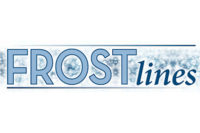In short order, announcements came from Emerson Climate Technologies regarding an electronic unit controller for Copeland condensing units with low-pressure controls, from Danfoss relating to ERC electronic controls for glass door merchandiser and commercial refrigerator and freezer cabinets, and from KE2 Therm Solutions about an evaporator efficiency controller.
“Moving from mechanical to electronic low-pressure control is an evolutionary step forward, but one which also provides a new electronic platform to enable improved system functionality over time,” was the comment from Emerson’s Jon Lazarow regarding his company’s part of the equation.
“For us, the ERC is a step forward to a new level of control that brings additional features, benefits, and value to our customers,” said Joel Eggart, sales manager for Danfoss.
Jeff Kavanagh, marketing manager for KE2 Therm, said, “Our controller is a game-changer for service technicians by offering the ability to communicate locally or globally via an Ethernet connection with no proprietary software required.”
The Technology
Emerson said in a release issued that its Electronic Unit Controller is “an integrated electronic pressure control solution to replace traditional mechanical low-pressure control switches, while enabling a smarter condensing unit. Electronic pressure-sensing accuracy maintains a tighter low-pressure control tolerance than mechanical controls to help decrease costly callbacks.”
Said Lazarow, “The technology really responds to the key needs of refrigeration OEMs, contractors, and service technicians who supply and work with condensing units. Emerson Climate is committed to product enhancements which save time, simplify service accuracy and quality, reduce warranty costs, and ultimately save operators money on their service bills — while also increasing the likelihood the equipment will successfully meet its life expectancy. “
He traced the evolution of the product back to “Emerson Climate’s acquisition of Dixell in 2009, which brought creative teams of people together to share new ideas of how electronics could be applied in innovative ways to refrigeration systems. Second, the applied costs of electronics have continued to come down to where there are now more competitive solutions, along with value-added features which can economically be integrated into the platform.”
The Danfoss ERC was first announced at the International Air-Conditioning, Heating, and Refrigeration Expo in Las Vegas earlier this year and described in more detail in one of Danfoss Solutions publications.
Said Eggart, “The ERC has two programming options. The control parameters can be accessed from the buttons on the front panel, or, for volume production, a Danfoss programming tool can be used. With the Danfoss programming tool, the control can be quickly set to the exact parameters needed for the specific requirements of the cabinets being produced.
“With the ERC we implemented features such as a switching-mode power supply that is able to operate on a wide range input voltage. For our customers, this takes the worry out of maintaining parts for 115vac or 220vac. With the ERC’s switching-mode power supply, the same control is used for 115vac or 220vac making inventory management much easier. New features such as ambient light sensors, motion sensors, and condenser sensors can be used to bring a new level of
efficiency and control to refrigerated equipment.”
KE2 Therm said its KE2 evap controller “reduces defrost by up to 86 percent and provides up to 20 percent energy savings over existing technology. Additionally, it eliminates the need for a separate defrost time clock, room thermostat, and defrost termination device.”
Said Kavanagh, “This technology measures system efficiency to provide system control instead of relying on a time-based component to manage the performance of the evaporator coil. With fewer defrosts, less heat is added to the refrigerated space, resulting in reduced compressor runtime and decreasing the wear on the entire system. Additionally, during defrost the controller manages the defrost heaters to save energy and reduce the fogging effect experienced with typical systems. For service technicians, as a standard offering, is the ability to communicate locally or globally via a simple Ethernet connection, with no proprietary software required. Technicians can view system status, change set points, and receive/respond to and clear alarms from any computer or smart phone.”
Install
The manufacturers said the learning curve for installation does not have to be long.
“Over the last decade technicians have become far more technically savvy as electronics are incorporated in much of the commercial equipment they service day to day,” said Danfoss’ Eggart. “A change from an electromechanical thermostat and defrost timer would require some basic rewiring, but it’s not an overly difficult task. The ERC control programming menu was designed to be very intuitive, so programming is a fairly easy task.”
KE2 Therm’s Kavanagh said, “Technicians that are installing the KE2 Evap are surprised at how easy it is to install. After a few installations, some contractors are starting to carry it as truck stock.”
Said Emerson’s Lazarow, “The time to learn it is very short. We’ve found it takes about five to 10 minutes to explain and run through the basics. After a couple of times setting and adjusting pressures, it takes under a minute for just about anyone to operate, so it becomes a big timer-saver very quickly.”
Publication date: 10/03/2011











